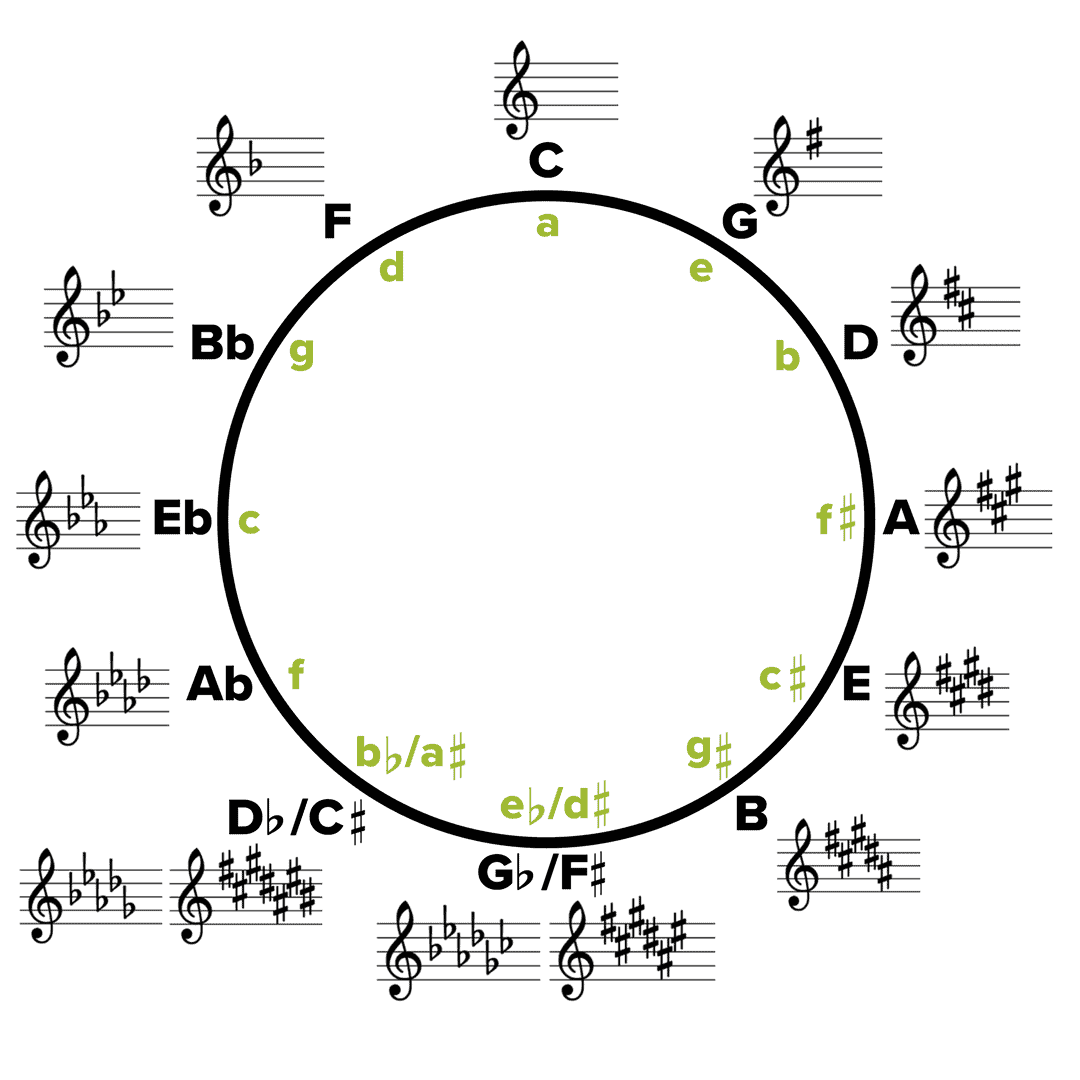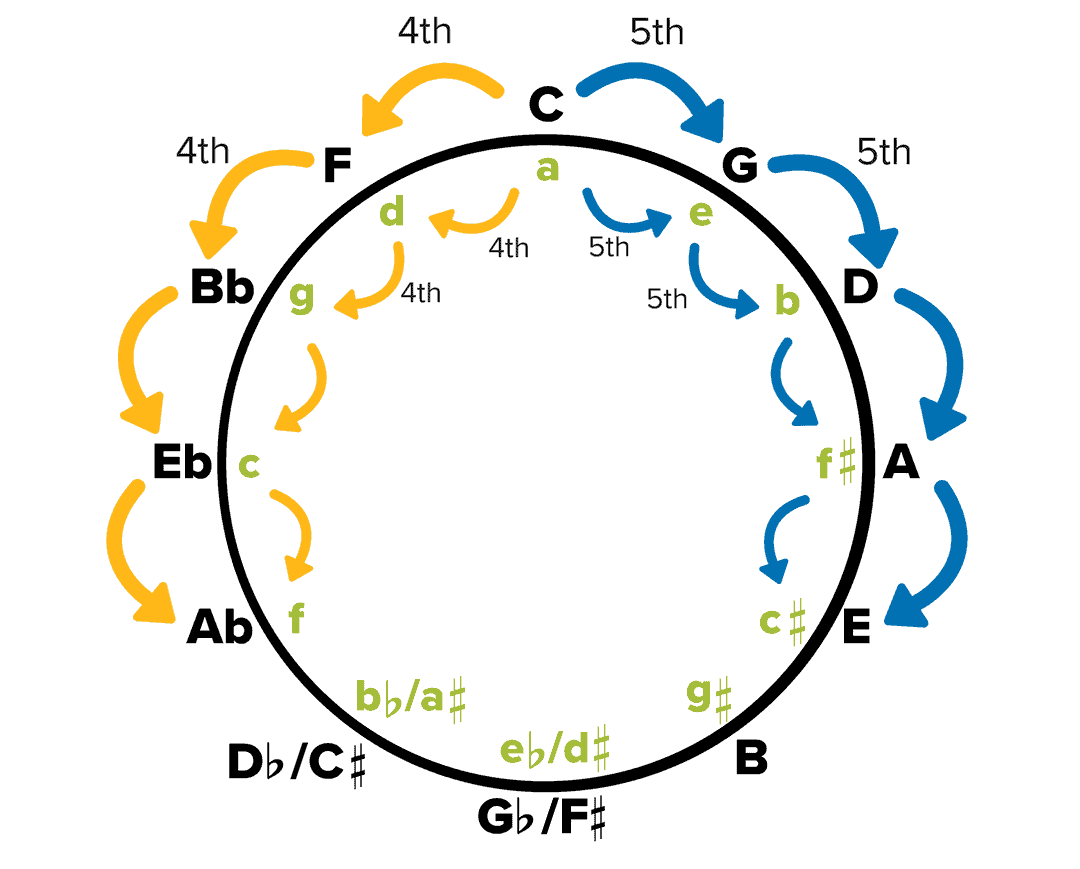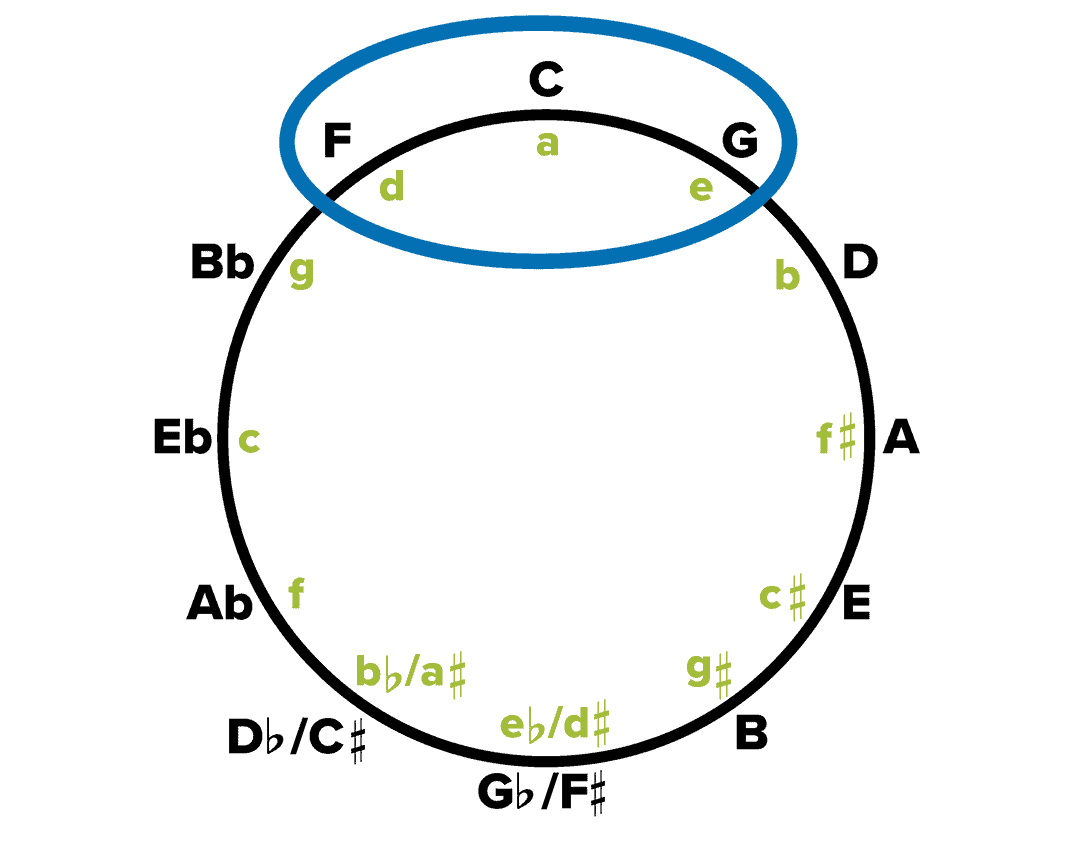The Circle of Fifths: A Guide to How and Why It's Used
The circle of fifths is a tricky concept, but it can easily be understood using our comprehensive guide. Grow your skills with this necessary method.

When it comes to music theory, the circle of fifths is one of the most important concepts you can learn. Useful for notation, transposition, understanding key signatures, and familiarizing yourself with the general structure of music, it is well worth your time to add the circle of fifths to your vault of music theory knowledge. The circle of fifths can seem a little overwhelming at first, but you will soon realize how easy it really is to understand!
What is the Circle of Fifths?
You may have seen a poster of it in your neighborhood music classroom, but what is it all about? The circle of fifths is essentially a map of keys. The top of the circle begins with the most common key, C Major, with no sharps or flats in the key signature. As you move clockwise around the circle, you move up an interval of a fifth, which would be G Major, and you add an F# to the key signature. Up a fifth from G is D Major, and you add another sharp, which would be C#. Starting back at C Major, if you go counterclockwise, you go down a fifth to F Major and add a flat, which would be Bb, and the circle continues! Inside the circle includes the relative minor keys, or the minor keys that share the same key signatures as their major relative.
Why Is the Circle of Fifths Important?
The circle of fifths is a great theory tool. It helps you figure out the key signature for every major and minor key. In addition to the keys, it's also useful to figure out the chord progressions that work well in a specific key. For example, in C Major, the F Major and G Major chords work well in a piece because they're next door neighbors to C in the circle!
Deciphering the Circle of Fifths
The circle of fifths is the relationship among the 12 tones of the chromatic scale, their corresponding key signatures, and the associated major and minor keys. Looking at the circle:
- the outer section shows the actual key signatures
- the capital letters represent the corresponding major keys
- the lowercase letters represent the corresponding minor keys

- Enharmonic equivalents are the areas where two keys are listed (keys that share the same key signature). The two keys are shown because both key signatures are commonly used. For example: G♭ and F#
Even though keys like C Major technically have an enharmonic equivalent, nobody would ever write a song in B# Major, because the accidentals would get really crazy, really fast! That’s why you see C Major shown by itself instead of listed with an enharmonic equivalent key.
Breaking Down The Circle of Fifths
The Fifths
The reason it’s called the circle of fifths is because of the interval relationships between each key signature.
Let’s start at C Major and work our way clockwise.

- G is a 5th up from C
- D is a 5th up from G
- A is a 5th up from D
- E is a 5th up from A
- and so on…

The same applies to the minor keys (on the inner circle). Let’s start with A Minor.
- E is a 5th up from A
- B is a 5th up from E
- F# is a 5th up from B
- C# is a 5th up from F#
- and so on…

The Circle of Fourths?
Occasionally, someone will call the circle of fifths the “circle of fourths,” because if you move around the circle counterclockwise, you will see the progression moves up by fourths. however this is much less common, and most refer to fifths.
Key Signatures
Because key signatures can get a little tricky to remember, the circle of fifths is a great tool! Let’s look at how the key signatures coordinate with the circle of fifths below:
- C Major and A Minor have no sharps and no flats
- G Major and E Minor have 1 sharp
- D Major and B Minor have 2 sharps
- A Major and F# Minor have 3 sharps
- and so on…
Use the circle of fifths to recall how many sharps or flats each key signature has, and to understand which major and minor keys are relative (or share the same key signature). For example: C Major and A Minor.
How to Use the Circle of Fifths
Bass Line Movement
The circle of fifths is regularly used for strong bass line movement, which in turn leads to some great chord progressions!
A very common bass line movement is: Up a 5th, Down a 4th

At first glance, it might not seem like this progression is following the circle of fifths because not every interval is an ascending 5th, but when you pick out the notes you will see: C, G, D, A, E, and B. Add some right hand notation, and you have a nice little melody using the circle of fifths as your structure!

Modulation
Using the circle of fifths makes modulating from one key to another much easier! That’s because the keys to the left and right of the key you’re in are all considered the best options when modulating.
Let’s use C Major as an example:
- The keys to the left and right of C Major on the circle of fifths are F Major and G Major.
- These keys are the best keys to modulate to because of the chords they share with C Major.

Uppercase letters indicate major keys. Lowercase letters indicate minor keys.
The circle of fifths is a great tool for showing you which keys share chords and are best for modulation purposes.
- C Major and G Major
- Chords in C Major: C, d, e, F, G, a, b diminished
- Chords in G Major: G, a, b, C, D, e, f# diminished
- C Major and F Major
- Chords in C Major: C, d, e, F, G, a, b diminished
- Chords in F Major: F, g, a, B♭, C, d, e dim
When modulating, you would likely use one of the shared chords to modulate to the new key.
To summarize, the circle of fifths is an essential tool in music theory, and you’ll be surprised how often it comes in handy! With the massive amounts of information that musicians need to memorize on a regular basis, we can tell you that the circle of fifths will make your life a lot easier. Experiment with chord progressions that make sense thanks to the circle of fifths, and you're on your way to composing the next great song!
Here are a few popular songs that use the circle of fifths that you can try today:
- “The Best of My Love” - The Eagles
- “Hey Joe” - Jimi Hendrix
- “Day Tripper” - The Beatles
- “I Will Survive” - Gloria Gaynor
- “Love You Like a Love Song” - Selena Gomez
- “Take on Me” - A-ha


